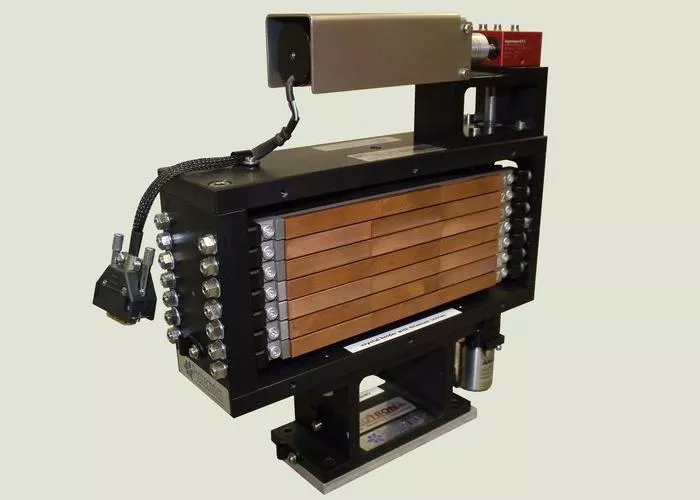A monochromator is an optical device used to isolate a specific wavelength of light from a broader spectrum. It plays a crucial role in spectroscopy, optics, and various scientific and industrial applications where precise wavelength selection is necessary. By using dispersive elements like prisms or diffraction gratings, a monochromator separates light into its component wavelengths and selectively transmits the desired one. This article explores the working principles, components, types, and applications of monochromators in detail.
How Does a Monochromator Work
A monochromator functions based on the principles of dispersion and selective wavelength filtering. Light, often polychromatic (containing multiple wavelengths), enters the device and passes through optical components that separate it into individual wavelengths. By adjusting a slit or rotating an optical element, the desired wavelength is selected and transmitted while blocking others.
Key Principles:
Dispersion: The ability of optical components, such as prisms or diffraction gratings, to separate light into its constituent wavelengths.
Selection: The ability to isolate and transmit a specific wavelength while blocking others.
Resolution: The degree to which a monochromator can distinguish between closely spaced wavelengths.
Components of a Monochromator
A monochromator consists of several key components that work together to achieve wavelength selection:
Entrance Slit
The entrance slit controls the amount of light entering the monochromator. A narrow slit provides better wavelength resolution but reduces light intensity.
Dispersing Element
The dispersing element is responsible for splitting light into its component wavelengths. Two common types are:
Prisms: Separate light based on refraction, where different wavelengths bend at different angles.
Diffraction Gratings: Use interference patterns to disperse light more efficiently and with higher resolution.
Collimating and Focusing Optics
Lenses or mirrors collimate the incoming light (make it parallel) before dispersion and then focus the selected wavelength for transmission.
Exit Slit
The exit slit determines the final wavelength that exits the monochromator. It works in conjunction with the dispersing element to provide precise wavelength selection.
Wavelength Selector (Rotation Mechanism)
Many monochromators use a rotation mechanism to adjust the angle of a diffraction grating or prism, enabling selection of different wavelengths.
Types of Monochromators
Monochromators come in different designs, optimized for various applications:
Prism-Based Monochromators
- Use a prism to disperse light based on refraction.
- Simple and robust but less efficient for high-resolution applications.
- Wavelength separation is nonlinear (different wavelengths spread out unevenly).
Diffraction Grating Monochromators
- Use a diffraction grating for light dispersion.
- Offer higher resolution and efficiency compared to prisms.
- Provide linear dispersion, making wavelength selection more predictable.
Czerny-Turner Monochromators
- Use concave mirrors for collimation and focusing, combined with a diffraction grating.
- Offer improved resolution and reduced optical aberrations.
- Commonly used in spectroscopy.
Echelle Monochromators
- Use high-angle diffraction gratings for extremely high resolution.
- Suitable for applications requiring fine wavelength discrimination.
Fabry-Pérot Monochromators
- Use interference effects rather than dispersion.
- Provide very high spectral resolution but require precise control.
Applications of Monochromators
Monochromators are used in numerous scientific, industrial, and medical fields. Some key applications include:
Spectroscopy
- Used in UV-Vis, infrared, and Raman spectroscopy to analyze material composition.
- Essential for studying light absorption, emission, and reflection properties.
Laser Systems
- Used to isolate specific wavelengths for laser experiments and optical research.
- Essential in applications like holography, communications, and laser calibration.
Biomedical Research
- Monochromators are used in medical diagnostics, including fluorescence microscopy and DNA analysis.
- Enable precise control of light wavelengths for biological imaging.
Optical Communication
- Used in fiber optics to filter and transmit specific light wavelengths for data transfer.
- Improve signal quality and reduce interference in telecommunications.
Industrial Quality Control
- Used in colorimetry and materials testing to ensure product consistency.
- Help in monitoring the optical properties of materials in manufacturing processes.
Astronomy
- Monochromators play a role in telescopes and space observatories to analyze light from celestial bodies.
- Help in studying the composition and movement of stars and galaxies.
Advantages and Limitations of Monochromators
Advantages:
- Precise wavelength selection.
- High resolution and accuracy in spectral analysis.
- Versatile applications across scientific and industrial fields.
- Adjustable slits allow customization for different levels of resolution and intensity.
Limitations:
- Reduced light intensity due to slit limitations and dispersion.
- High cost for advanced monochromators with high resolution.
- Requires precise alignment and calibration to maintain accuracy.
Conclusion
Monochromators are indispensable tools in optical science, enabling precise wavelength selection for various applications in spectroscopy, biomedical research, industrial quality control, and beyond. With advancements in optical engineering, monochromators continue to evolve, providing higher resolution and efficiency for cutting-edge research and technology. Understanding their working principles, types, and applications allows scientists and engineers to select the most suitable monochromator for their specific needs.

